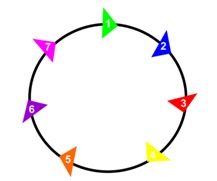In the workplace when faced with a problem many seek to mask the problem, pass it on, blame it on someone else or perhaps procrastinate in dealing with the problem.
The goal of a good problem-solving process in the professional work environment is to make the organization more "conflict-friendly" and "conflict-competent".
Here are seven (7) steps for an effective problem-solving process:
- Identify the issues. Be clear about what the problem is. Try talking to others, as this may help to bring clarity to the identified problem.
- Explore/Understand everyone's interests. Interests are the needs that you want satisfied by any given solution. In understanding everyone’s interest ask questions such as: How is this problem affecting me? How is it affecting others? Who else experiences this problem? What do they do about it?
- Set goals / List the possible solutions (options). This is the time to do some brainstorming. There may be lots of room for creativity.
- Evaluate the options. What are the pluses and minuses? Honestly!
- Select an option or options. What's the best option, in the balance? Is there a way to "bundle" a number of options together for a more satisfactory solution? .
- Document the agreement(s). Don't rely on memory. Writing it down will help you think through all the details and implications.
Effective problem solving does take some time and attention but less time and attention than is required by a problem not well solved. What it really takes is a willingness to slow down. A problem is like a curve in the road. Take it right and you'll find yourself in good shape for the straightaway that follows. Take it too fast and you may not be in as good shape.



